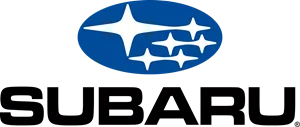When you recruit and hire eligible job applicants for your open positions, effective workplace safety training courses will help workers work efficiently and effectively. A continuous and effective on-boarding system can help instruct workers not only on the practical aspects of jobs, such as correct safety protocols but also on the safety culture of the company.
But before we continue – what is a safety culture, and why is it important?
Safety culture is a broad, organizational approach to safety management. The safety culture is the end product of the concerted efforts of individuals and organizations towards the principles, behaviors, goals, and expertise of the health and safety system of the company.
In creating a safety culture, all levels of management are highly regarded on how they act toward staff and on a day-to-day basis. Upper management’s dedication to safety at work makes staff take it more seriously and translates into a healthier work environment for all. Responsibility to promote a culture of safety may start with management, but it is down to every person in the business. Each has a part to play in keeping themselves and others safe.
Organizations with a safety are profoundly concerned with the well-being of workers, and this is demonstrated in all levels and divisions of the company. The practice of anonymous observation is mostly removed and substituted with management taking the time to walk around their facility to observe and positively reinforce company values for good and bad incidents.
Rewards and bonuses can only be in effect if they are provided for the correct purposes, such as documenting injuries and including close misses. In a safety, leaders collect information from all areas and use it to enhance and facilitate protection at all levels.
Employee retention techniques, such as onboarding and workplace safety training courses, will also help to reduce the significant time and money expended on attracting and retaining new employees.
According to the Institute for Research on Labor and Employment (IRLE) at the University of California at Berkeley, the cost of replacing an employee is approximately 9% of the annual salary of the employee. In addition to any loss of productivity and institutional awareness, these costs include workplace safety training courses, selection, on-the-job learning costs, and any separation costs.
1.A continuous onboarding and training process
Although some employers consider boarding only for new hires, the process is also critical for maintaining and engaging workers in the full term of their jobs.
Current staff, whether they are changing roles or returning to work after an injury in the transitional duty program, can benefit from an onboarding program and workplace safety training courses, too. This part of the process is important, as research shows that 28% of injuries to the workplace occur in the first year of employment.
The process of onboarding staff in the organization, where safety is concerned, is, therefore, an ongoing one, and is never really a task that can be regarded as “completed”.
2.Orientation
The orientation process and workplace safety training courses should describe the general environment, job-related roles, and the overall safety. Employees may learn, for example, about the location of emergency exits, eyewash stations, and safety data sheets, and become aware of safety-related procedures, such as how to report an injury or unsafe conditions.
3.On-the-job safety training
Whether for a new hire or someone new to a particular role, businesses can provide workplace safety training courses that promote the safety of the organization. These activities include training in safety and orientation. Online safety training and orientation should involve both skill-based and awareness-based training:
- Skill-based workplace safety online training courses illustrate the practical techniques required to carry out a particular task, such as the operation of a piece of machinery.
- Awareness-based online safety training includes general policies, recognition of hazards and expectations for maintaining a safe and healthy work environment.
4.Practical tips
Here are a few final tips for on boarding your employees in a manner that aligns with you’re the safety for your organization:
Classify safety responsibilities and include this in your workplace safety training courses.
- Do this for each level of your organization. This will include procedures, goals, and plans for a culture of health.
Share the safety vision in online safety training.
- Everybody will be on the same boat when setting priorities and targets for their safety.
Enforce and emphasize accountability in workplace safety training courses.
- Establish a process that holds everyone accountable for being visibly involved especially managers and supervisors. We are the founders of a progressive transition.
Creating a productive safety is an on-going process and is a substantial commitment on behalf of the entire company. But the effort results in a positive attitude toward safety and a reduction in accidents and incidents.
Last Note
Would you like to learn more about creating a safe and healthy working environment?
We invite you to enroll for any of the great workplace safety training courses in the Coggno library. Click here to learn more about them.




















